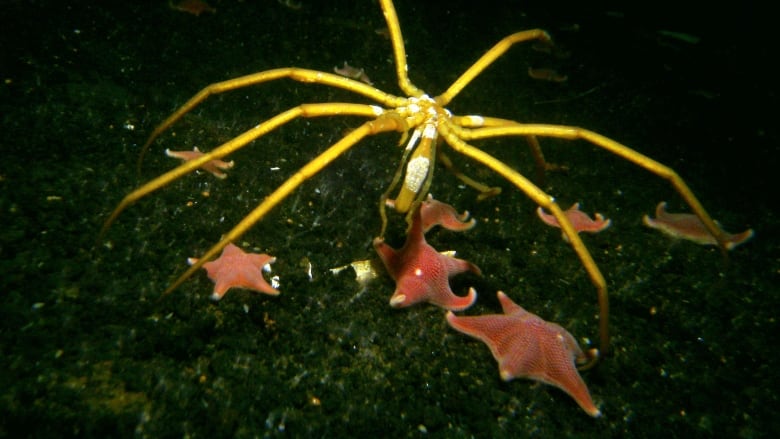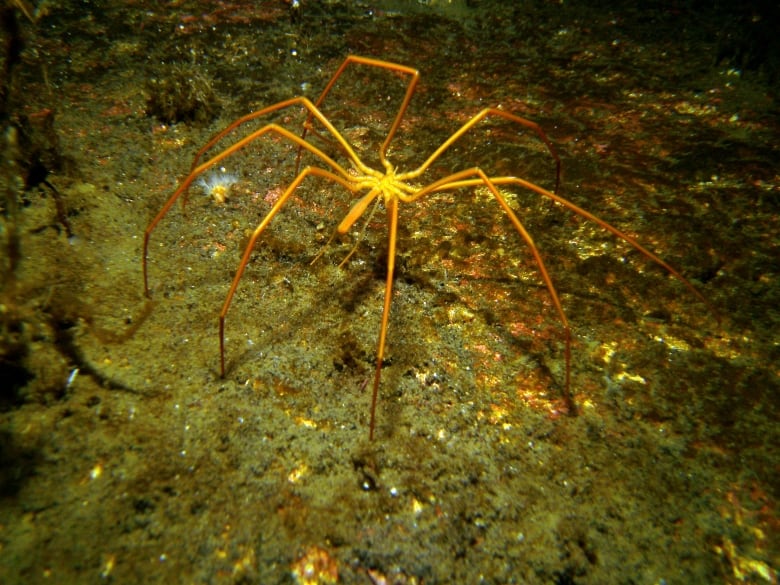Researchers have more questions than answers about giant sea spiders
Creatures grow to 35 centimetres in diameter in Antarctic; over 100 times larger than their counterparts

If you're afraid of spiders, these critters are your worst nightmare: giant sea spiders, living infrigid waters in the Antarctic. Creepy as they may seem, scientists say they have a lot to teach us about an underexplored ecosystem.
The giant spiders are an example of a phenomenon found inArctic and Antarctic waters called polar gigantism. In extremely cold deep sea environments, a variety of species, including sea spiders, have evolved to be much larger than their counterparts in warmer climates.

- Stunning drone video provides a rare view of beluga whales
- Want more CBC North? Find us on Facebook
"You practically need a magnifying glass to see them or spot them in the water," he said, "whereas in the Antarctic, where we've been working, they grow to be 30 to35 centimetres in diameter."
Various theories exist on how polar seas allow creatures to grow to such a large size.Tobalski's team is testing one hypothesis, which suggeststhat the spiders have been able to grow so large because freezing temperatures have slowed theirmetabolism to the point where they barely needoxygen.
Understandinghow the growthis possible is only part of the puzzle, though. Tobalski says that the "why" is just as important.

"There's generally an underlying hypothesis that offers some selective advantage, some kind of evolutionary advantage," he said."Teasing apart what exactly that is is the question."
Tobalski said the work his team has done on the giant sea spiders is just the tip of the iceberg.
To date, Tobalski has conducted 49 dives to study the spiders. Each oneallows for approximately half an hour of observation time.
"In Antarctica, it's incredible how huge the spaceis, and it's a great deal of money and effort just to get small samples of information fromalimited location," he said.
"It's humbling to dive there. You just get incredible diversity of organisms, and above the ice is so harsh and bleak."
'We may lose some of those species before we even discover them'
Michael Pisaric, a professor at Brock University who studies climate change, says thatmysterious creatures such asgiant sea spiders demonstrate what's at stake as the world grapples with climate change.

Pisaric saysthe estimates for the number of species in the world could range from as few as 10 million to as many as100 million. With many of these undiscovered species living in remote regions such as the Arctic, the deep oceans and the tropical rainforest, they could be particularly susceptible to changes in the environment.
"There's probably a lot of species there that we don't know about," Pisaric explained."As the climate changes, we may lose some of those species before we even discover them."












_(720p).jpg)


 OFFICIAL HD MUSIC VIDEO.jpg)
.jpg)



























































































